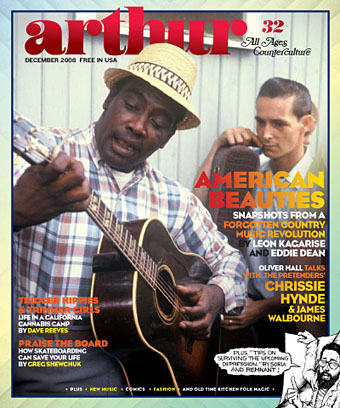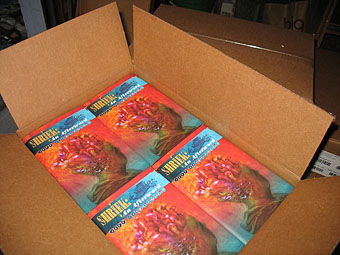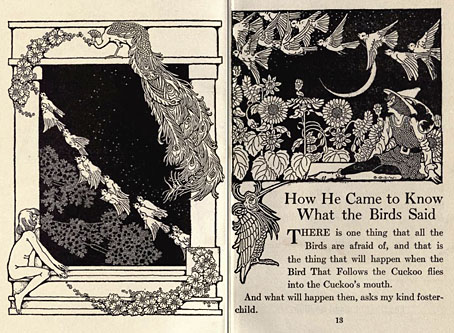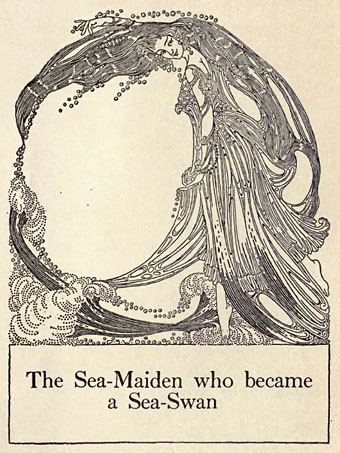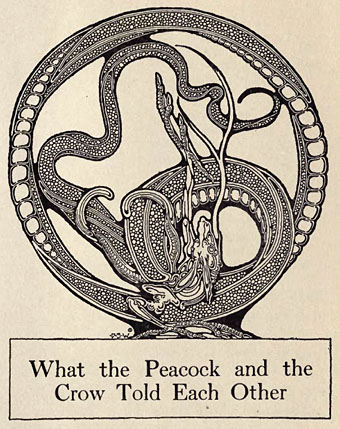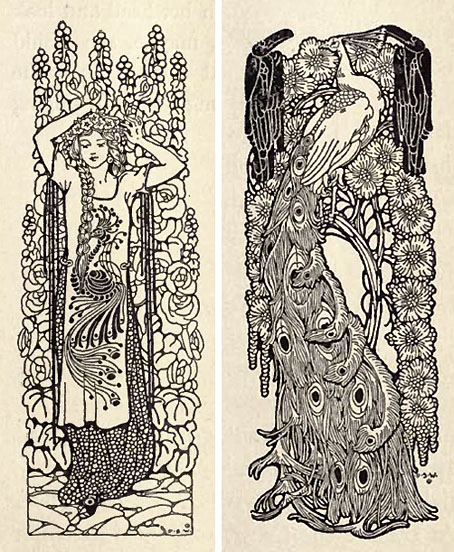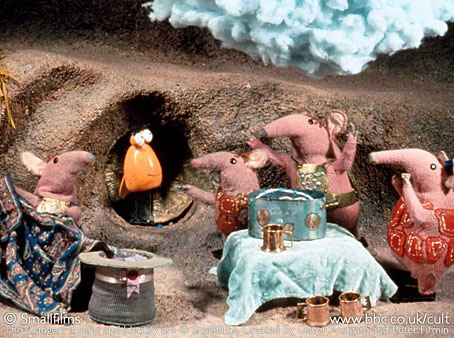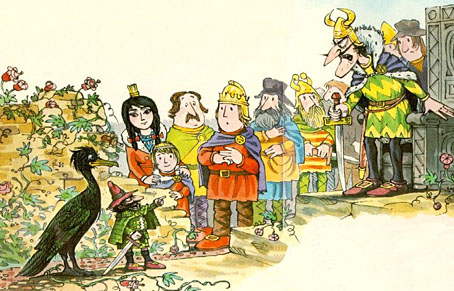The beast within
| The many faces of Jekyll & Hyde.
Category: {books}
Books
Mixed blessings
Arthur #32 is now out with a great cover. As usual you can download it from the Arthur site. Unfortunately that’s the only way you’ll be able to get hold of this issue since the paper copy won’t be printing. Arthur still needs your support, however, via subscriptions, donations and/or advertising if you haven’t wasted all your money helping investment bankers hang on to their bonuses.
On the upside, Jeff VanderMeer notified me that Shriek: An Afterword, the novel of his which I designed earlier this year, has arrived from the printer and should be shipping forthwith. Read more about that (and order a copy) here.
Previously on { feuilleton }
• Fungal observations
Who is Heeps Willard?
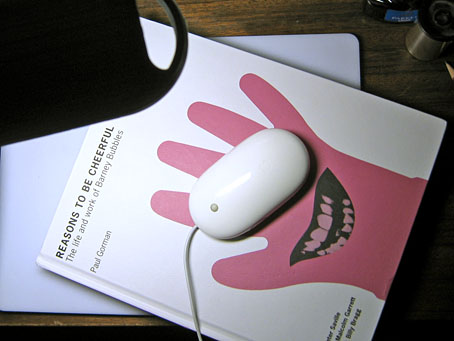
In which Christmas arrives two weeks early…
It was nearly two years ago that I wrote “We’re overdue a decent book-length examination of his work and his influence” at the end of the epic Barney Bubbles post. Today I finally got to sit down with a copy of Paul Gorman’s wonderful monograph about the man and his work; if only all wishes were fulfilled so swiftly and completely. This is a really excellent book but then I would say that (even without being mentioned within) seeing as I’m among the target audience. Gorman’s text is light but anecdote-rich which is what I would have preferred, leaving plenty of room for page after page of incredible visuals. The heavy design analysis can wait, for now what we’ve required was a book to set the record straight (as it were) and tip the balance in Barney’s favour after years of neglect. This is that book.
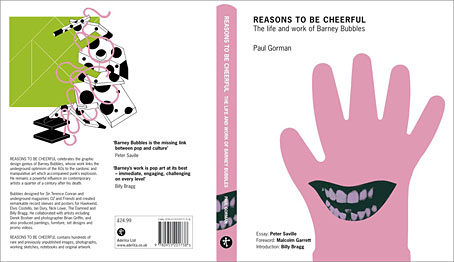
I’m actually knocked out more than I expected seeing so much first class work brought together in one place. Barney’s early work throws light on his later evolution while the later material—as BB collectors Rebecca and Mike have noted—contains many traces of his earlier obsessions. Add to that the pages of sketches (!) and layout drafts, some truly stunning late paintings, furniture designs—including the electric plug table which Rian Hughes mentioned—and you have an essential purchase.
It’s worth mentioning again that Paul generously let me run an extract featuring some exclusive pieces that didn’t make the final cut. Paul also has further page samples at his site. As to who Heeps Willard is…that would be telling. You’ll have to buy the book if you want to find out.
Previously on { feuilleton }
• Reasons To Be Cheerful, part 3: A Barney Bubbles exclusive
• More Barney Bubbles
• Reasons To Be Cheerful, part 2
• Reasons To Be Cheerful: the Barney Bubbles revival
• Barney Bubbles: artist and designer
The art of Dugald Stewart Walker, 1883–1937
A posting of Dugald Stewart Walker’s work this week at the always excellent Golden Age Comic Book Stories sent me back again to the Internet Archive to see if there might be further examples among their collection of scanned library books. Sure enough there’s not only a copy of the book which GACBS sampled from, Padraic Colum’s The Girl Who Sat By The Ashes, but also other fairy tale collections by Colum, including the one featured here, The Boy Who Knew What the Birds Said (1918). Colum is well-represented in the Internet Archive’s American Library section and many of his titles seem to be at least partly illustrated. A cursory glance at some of the others turned up his retelling of Greek myths illustrated by Willy Pogány.
I’m not as keen on Walker’s work as I am other artists of this period—he has a tendency to give his adult characters gnome-like features—but the line work and compositions are first class. The Boy Who Knew What the Birds Said is especially nice for its many peacock details, some of which are featured below.
left: Bloom-of-Youth and the Witch of the Elders; right: What the Peacock and the Crow Told Each Other.
Elsewhere on { feuilleton }
• The illustrators archive
Previously on { feuilleton }
• Peacocks
• Willy Pogány’s Parsifal
Oliver Postgate, 1925–2008
The Clangers (and a Froglet).
Lots of eulogies for Oliver Postgate doing the rounds just now, somewhat inevitable when his Smallfilms productions for the BBC furnished the imaginations of generations of British children in the Sixties and Seventies. Smallfilms’ films matched their name, being short animations created on minimal budgets by a trio of Postgate (writing, narration), Peter Firmin (artwork and animation) and Vernon Elliot (music). Postgate’s voice was the single constant across the disparate stories. For anyone of a certain age his distinctive tones carry that punch of primal recognition common to all things which make a strong impression during childhood.
Noggin the Nog.
I watched everything Smallfilms produced but being a space-obsessed Space Age kid my favourites were always The Clangers, a family of hooting, pink creatures who shared a moon-like planetoid with a Soup Dragon and (in an orbiting nest) an Iron Chicken. Being equally obsessed with Norse mythology, however, I also enjoyed Noggin the Nog, which never seemed to get repeated very often, probably because the early films were made in black and white. Oliver Postgate seemed to like dragons; as well as the Soup Dragon, Noggin had a very traditional Ice Dragon with a pile of treasure while the otherwise non-fantasy Ivor the Engine—tales of a small Welsh steam train—included a tiny dragon among the cast of characters, perhaps derived from the national emblem of Wales. Postgate and Peter Firmin reworked some of these stories into book form and my favourite books in our school library were the Noggin the Nog ones and Tove Jansson’s tales of the Moomins. The Clangers aren’t as alien as they first appear when you know that their true identity can be found in the 1967 tale of Noggin and the Moon Mouse.
Needless to say, YouTube has numerous opportunities for us to sate curiosity or indulge nostalgia, including BBC 4’s 2005 documentary about Smallfilms. The Guardian gathered a few choice examples as an addendum to their obituary page.
• Lengthy Times obituary
• The homespun genius of Oliver Postgate
• See Emily play | The BBC meets the girl from Bagpuss
Previously on { feuilleton }
• Occultism for kids

